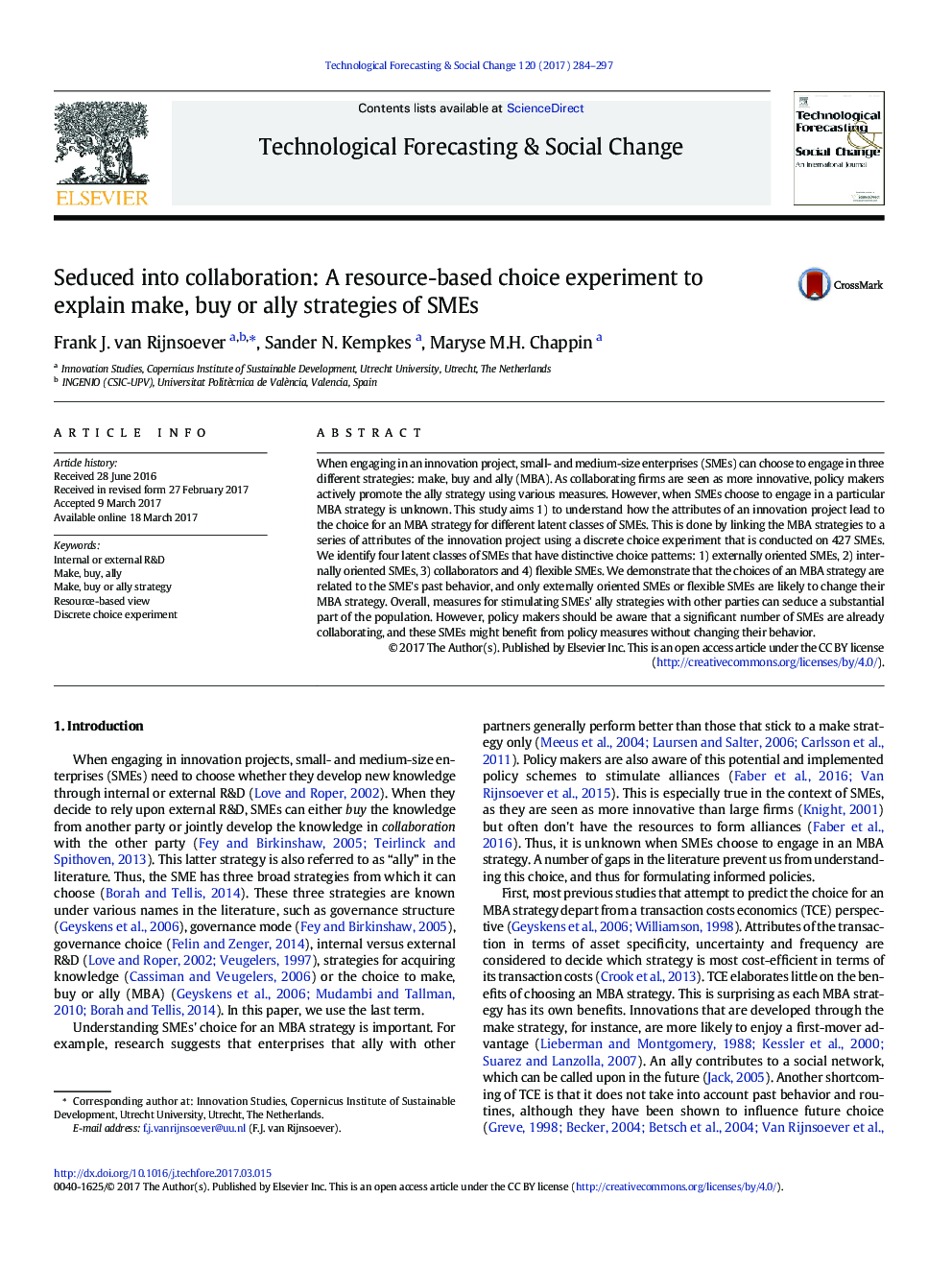| Article ID | Journal | Published Year | Pages | File Type |
|---|---|---|---|---|
| 5036788 | Technological Forecasting and Social Change | 2017 | 14 Pages |
â¢We predict the choice for a make, buy or ally strategy for innovating SMEsâ¢We apply a discrete choice experiment and use choice patterns to seek latent classesâ¢There are four latent classes of SMEs. Three strongly prefer particular strategies.â¢Only one class will switch its strategy to ally as a result of policy measures.â¢The choices of an MBA strategy are related to the SME's past behavior.
When engaging in an innovation project, small- and medium-size enterprises (SMEs) can choose to engage in three different strategies: make, buy and ally (MBA). As collaborating firms are seen as more innovative, policy makers actively promote the ally strategy using various measures. However, when SMEs choose to engage in a particular MBA strategy is unknown. This study aims 1) to understand how the attributes of an innovation project lead to the choice for an MBA strategy for different latent classes of SMEs. This is done by linking the MBA strategies to a series of attributes of the innovation project using a discrete choice experiment that is conducted on 427 SMEs. We identify four latent classes of SMEs that have distinctive choice patterns: 1) externally oriented SMEs, 2) internally oriented SMEs, 3) collaborators and 4) flexible SMEs. We demonstrate that the choices of an MBA strategy are related to the SME's past behavior, and only externally oriented SMEs or flexible SMEs are likely to change their MBA strategy. Overall, measures for stimulating SMEs' ally strategies with other parties can seduce a substantial part of the population. However, policy makers should be aware that a significant number of SMEs are already collaborating, and these SMEs might benefit from policy measures without changing their behavior.
